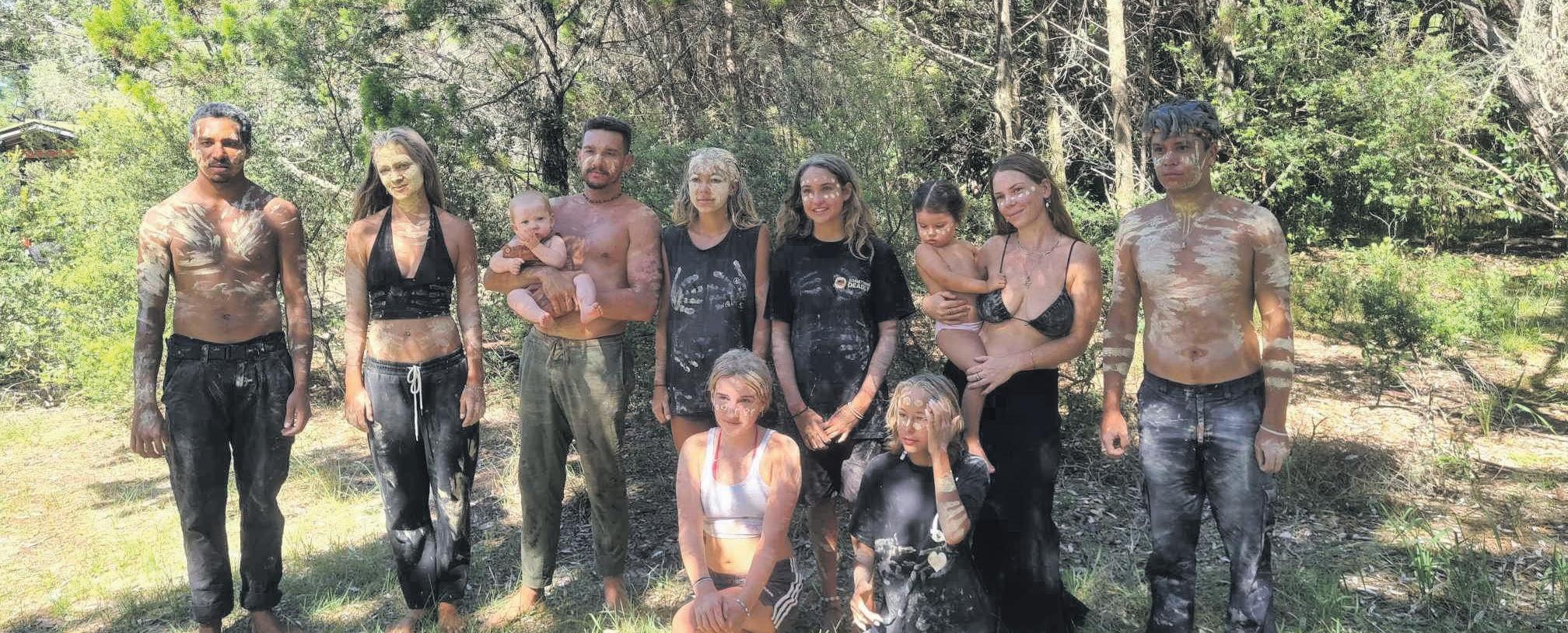
3 minute read
Indigenous community fight to save sacred site in Brunswick Heads from development
continued from front page
The site contains Aboriginal middens, is home to a host of wildlife, including the vulnerable Wallum froglet and the Wallum sedge frog.
Ecologists have dated old growth, scribbly gums in the area to be more than 200 years old.
Among the Wallum heathland, adjacent to Simpson’s Creek, where Jahvis spent his days as a child - and still lives today - is where bulldozers could soon start to line up.
Property developer Clarence Property plan to construct a major residential subdivision, consisting of 124 residential lots, three medium density lots and supporting infrastructure on the precious site.
Last week, Byron Shire Council approved a subdivision works certificate, subject to conditions, for stage one of the development.
The Northern Regional Planning Panel (NRPP) had already approved the developer’s proposal in May last year.
Jahvis said he did not want another sacred site lost to development.
“I remember the generation before us fighting for Roundhouse Place (in Ocean Shores) one of our men’s initiation sites, which I was supposed to go through, but never got to, because this Shire decided to sell it to pay their debts,” Jahvis said.
“I don’t have kids yet, but when I do, I don’t want to show them 128 houses sitting there (on Wallum) just like I’m going to show my kids Roundhouse Place and all our other different sacred sites around this place that have been lost,” he said.
Jahvis said his major concern with the development was how close it was to the Brunswick River.
The same river he grew up spearfishing on with his family.
“I live on a 16-foot boat, so I understand the need for housing development, I do,” he said.
“But I would still rather live on my boat in the rain, than see this development go through.
“You’ll never be able to stop people washing their cars, washing their driveways, emptying their mop buckets straight into the streets, that all goes straight into the sanctuary zone in that river, which you’re not even allowed to drive a boat through.
“So, if I can get fined for spearing one fish, but the developers - who have the potential to wipe out an entire sanctuary zone gets nothing - I think that is an issue for me.”
Local indigenous elder Mark Cora said it was his job, and responsibility to the area, to look after its culture and teach young people.
“When we teach young people, we need land to teach them,” Mr Cora said.
“I know this is all in response to housing shortage, and I get that.
“I also get that there’s other blocks of land to develop - other than one that holds a lot of cultural significance and holds a number of artifacts.
“We as cultural keepers, it is our responsibility to stand up and protect the land.”
Mr Cora also spoke about the environmental significance of the area, which is home to old growth, pre-colonial scribbly gums, with shield, fire and witchetty grub scars.
“It’s not just what’s happening at the top of the tree, what those root systems are doing are drumming into the ground and holding water at a particular level. “It’s a whole filtration system.
“I’m sure you all know about acid sulfate soils, so when we release that little monster, we’ve got nothing.
“We’ve all seen what salt does when it comes up out of the ground, all it does is kill everything,” he said.
An application for an Interim Heritage Protection Order (IHO) has been made with the NSW government in a bid to help protect Wallum, 15 Torakina Road, Bayside, Brunswick, from development.
The application is sitting with Heritage NSW in a preliminary assessment.
The Minjungbal people, original custodians of the
Brunswick River and Tweed Heads region, and non-indigenous community members have repeatedly raised deep concerns about the ‘Wallum development’ taking place on traditional lands.
In a statement to council, they wrote ‘we as a collective have worked tirelessly to draw attention to our local shire council that the Wallum development is detrimental to our native flora and fauna.
In December last year, independent Elders, cultural leaders and cultural educators who undertook a preliminary site-walk advised council that a Cultural Heritage Assessment (CHA) undertaken in 2010 was missing important and vital content.









